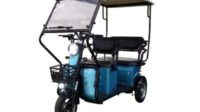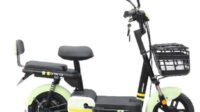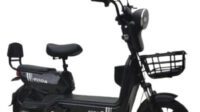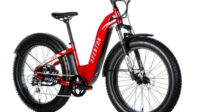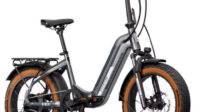
If you’re considering joining the ever-growing community of E-bike riders, you’re in for an exciting journey. E-bikes, or electric bikes, have revolutionized the world of cycling, offering pedal-assisted speed and convenience that appeals to riders of all ages and backgrounds.
In this comprehensive guide, we will walk you through the crucial factors to consider when choosing the perfect E-bike for your needs.
E-Bike Versatility: It’s for Everyone
E-bikes have quickly become a preferred mode of transportation for a diverse range of people. Whether you’re looking to commute, explore scenic routes, or simply enjoy leisurely rides, there’s an E-bike for you. They cater to various lifestyles and preferences, and here’s why:
- Commuting Ease: E-bikes are a fantastic alternative for individuals who wish to reduce their dependence on cars. They are ideal for those with moderately long commutes, where pedal assistance can make the journey more comfortable.
- Cargo Carriers: E-bikes are well-suited for riders who need to transport cargo, which could even include children. With pedal assistance, carrying heavy loads becomes a breeze.
- Speed and Distance: E-bikes are designed for those who seek to travel faster, cover longer distances, and tackle more challenging terrain. They enable you to cruise effortlessly and efficiently.
The world of E-bikes is both exciting and diverse, with numerous models to choose from. To select the perfect E-bike, you need to understand and consider four primary decision points: class, motor, battery, and features.
E-Bike Classes: Pedal Assist and More
E-bikes are categorized into different classes based on their capabilities. Understanding these classes is crucial in finding the right bike for your specific needs:
- Class 1 (Pedal Assist, 20 MPH): Class 1 E-bikes provide pedal assistance up to 20 miles per hour. They are widely accepted and can be used on most trails and paths, making them incredibly versatile.
- Class 2 (Throttle Assist): Class 2 E-bikes offer throttle assistance, essentially providing motorized assistance. It’s important to note that REI doesn’t sell these bikes due to certain use restrictions.
- Class 3 (Pedal Assist, 28 MPH): Class 3 E-bikes provide pedal assistance up to 28 miles per hour. While they offer enhanced speed, they may come with some restrictions, primarily for mountain biking. Local regulations may affect where they can be ridden, so check with your local authorities.
Understanding the class distinctions is vital, as it determines where you can ride your E-bike legally.
Motor Placement: Mid-Drive vs. Hub-Drive
E-bikes come equipped with motors that are either mid-drive or hub-drive. Each type has its characteristics and advantages:
- Mid-Drive Motor: A mid-drive motor is placed in the bottom bracket, providing a balanced feel that mirrors your natural pedal stroke. It also allows for more straightforward wheel maintenance, making flat tire repairs more manageable. Mid-drive motors work in harmony with the bike’s gearing system, ensuring efficient battery use.
- Hub-Drive Motor: Hub-drive motors are located in the front or rear hubs of the bike. They tend to feel more like a push or pull. Hub-drive motors are a great choice if you prefer a motor that provides additional power but may not feel as balanced as mid-drive motors.
When deciding between mid-drive and hub-drive motors, consider your riding preferences, the terrain you’ll be covering, and the maintenance convenience you desire.
Torque and Wattage: What Drives Your E-Bike
Two critical specifications to look at when choosing an E-bike are torque and wattage. These determine how your bike moves and the power it consumes:
- Torque: Torque is the force that propels your bike forward. More torque means the bike can handle inclines and rough terrain more effectively.
- Wattage: Wattage indicates the amount of electricity or power required to operate the bike. It directly affects how quickly your battery drains. E-bikes typically feature 250 Watts or 500 Watts, with occasional options of 750 Watts.
The balance between torque and wattage is essential, and your choice should align with your riding style and the terrain you’ll encounter. Lower wattage and torque may result in longer battery life, while higher wattage and torque offer more power but may drain the battery faster. Consider what matters most to you – extended range or enhanced power.
Battery: Capacity and Placement
E-bike batteries come in various types, offering different placement options and capacities:
- Internal Removable Battery: Internal batteries provide a clean look, akin to regular bikes, and may include mounting points for accessories like water bottle cages.
- Internal Non-Removable Battery: These internal batteries don’t allow for removal but still maintain a sleek appearance.
- External Battery: External batteries, as the name suggests, are easily removable and replaceable. They can be placed in various locations on the bike.
Battery capacity is crucial, and E-bikes typically offer batteries ranging from 250 watt-hours to 500 watt-hours. Battery capacity directly influences your bike’s range, which varies based on how much pedal assistance you use.
Calculating Range: It’s All About Pedal Assist
One of the most common questions potential E-bike riders ask is, “How far can I go on one charge?” The answer to this question primarily depends on the level of pedal assistance you use. The more assistance you require, the shorter the range, and vice versa.
Manufacturers often provide a range estimate for their E-bikes, such as 20-40 miles or 40-50 miles. These estimates typically reflect the bike’s range when using minimal pedal assistance. Your actual range may vary based on your riding habits.
Final Considerations for the Perfect E-Bike
As you narrow down your options and prepare to choose your E-bike, here are a few more factors to consider:
- Integrated Features: E-bikes often come with built-in lights, security features, and more. If these are important to you, look for a bike that offers the features you desire.
- Controller: The controller is a vital component that powers the E-bike on and off and allows you to select your level of assistance. Consider the information the controller provides, as more advanced controllers offer data on battery life, speed, and range.
- Weight: E-bikes can vary significantly in weight, from 25 pounds to 65 pounds or more. Your choice should align with how you intend to transport and store the bike, so it fits seamlessly into your lifestyle.
Size and fit are essential considerations as well. Make sure to select an E-bike that suits your height and riding preferences.
In conclusion, the world of E-bikes offers a wide array of choices, and selecting the perfect bike involves weighing several critical factors. Understanding the E-bike class, motor placement, torque, wattage, battery type, and capacity will guide you toward a well-informed decision. E-bikes bring convenience, speed, and versatility to your cycling adventures, and the right choice ensures a thrilling and enjoyable ride every time.
Whether you’re an urban commuter, a weekend explorer, or someone in search of eco-friendly transportation, there’s an E-bike out there with your name on it. Make the selection process an enjoyable journey of its own, and soon, you’ll be cruising effortlessly on your brand new E-bike, discovering new horizons and enjoying the ride of a lifetime.
- 12 Kata-Kata Bijak Pentingnya Komunikasi yang Baik, Tiket Menuju Sukses – November 15, 2023
- 35 Quotes tentang Public Speaking yang Menginspirasi – November 15, 2023
- Review Sepeda Listrik Uwinfly Dragonfly 7 (DF7) – November 14, 2023


